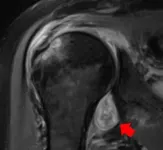Treating vision loss globally would see social and economic benefits
An estimated 1.1 billion people were living with untreated vision impairment in 2020, but researchers say more than 90 per cent of vision loss could be prevented or treated with existing, highly cost-effective interventions
2021-02-17
(Press-News.org) An estimated 1.1 billion people were living with untreated vision impairment in 2020, but researchers say more than 90 per cent of vision loss could be prevented or treated with existing, highly cost-effective interventions.
Published today in The Lancet Global Health, a new commission report on global eye health calls for eye care to be included in mainstream health services and development policies. It argues that this is essential to achieve the WHO goal of Universal Health Coverage (UHC) and the 2030 United Nations Sustainable Development Goals (SDGs).
Written by 73 leading experts from 25 countries, including University of Melbourne Professor Hugh Taylor, the Lancet Global Health Commission Report on Global Eye Health reveals that with the right tools, strategies, and sufficient funding, improving eye health can have immediate and substantial benefits for the economic and social prosperity of individuals and nations.
Researchers found addressing preventable sight loss could bring global economic benefits of $AUD 530 billion a year and is essential to reducing poverty and inequality, while improving education, gender equality and employment prospects.
Without additional investment in global eye health, new estimates also reveal that 1.8 billion people are expected to be living with untreated vision loss by 2050. The vast majority (90 per cent) reside in low- and middle-income countries (LMICs), with the greatest proportion in Asia and sub-Saharan Africa.
The Commission also identifies an eye healthcare workforce shortfall as a major barrier to care in LMICs, with one ophthalmologist serving one million people in parts of sub-Saharan Africa, compared to an average 76 per million in high-income countries.
Professor Taylor said: "Overall, Australia has excellent health care including eye care, however it's not available, accessible, appropriate and affordable for all, particularly for Indigenous Australians.
"It is wrong that our First Nations people and those living in low-socio-economic areas are still disadvantaged when it comes to preventable vision loss. This includes having access to proper hygiene facilities that play a key role in preventing eye infections and other illnesses.
"Eye care needs to be integrated into universal health care as recommended by WHO as it contributes significantly to achieving the UN SDGs. It is important that data are monitored regularly to ensure all are receiving the eye care that they need and deserve."
Evidence in the report shows that impaired vision disproportionately affects women, rural populations, and ethnic minority groups.
New estimates suggest that for every 100 men living with blindness or moderate to severe vision loss worldwide, there are 108 and 112 women affected, respectively. Much of this gender imbalance is determined by socioeconomic factors, such as reduced access to care.
To develop and deliver comprehensive eye health services that are well integrated in national health systems, are people-centred, and further the SDGs, the Commission authors call on governments to:
Adopt a new definition of eye health which includes maximised vision, ocular health, and functional ability, while recognising its contribution to overall health, wellbeing, social inclusion, and quality of life.
Promote the rights of people with vision impairment by creating a more inclusive society. For example, by providing rehabilitation services, assistive technology, and accessible spaces.
Include eye health as a key component of universal health coverage, and part of the planning, resourcing, and delivery of wider health care. Key to this is strengthening eye care delivery within primary care.
Eliminate cost barriers to accessing eye care by incorporating population needs into national health financing to pool risk and protect the most vulnerable.
Improve access to quality eye care, particularly in remote areas, using technology and treatment developments in telemedicine, mobile health, and artificial intelligence.
Expand the eye health workforce to meet population needs, for example by increasing the number of skilled personnel, strengthening training, and providing better equipment.
Integrate eye health teams into the general health workforce, and train general healthcare workers in eye health
INFORMATION:
ELSE PRESS RELEASES FROM THIS DATE:
2021-02-17
FEBRUARY 15, 2021, NEW YORK - A Ludwig Cancer Research study has identified a novel mechanism by which a type of cancer immunotherapy known as CTLA-4 blockade can disable suppressive immune cells to aid the destruction of certain tumors. The tumors in question are relatively less reliant on burning sugar through a biochemical process known as glycolysis.
Researchers led by Taha Merghoub and Jedd Wolchok of the Ludwig Center at Memorial Sloan Kettering Cancer Center (MSK) and former postdoc Roberta Zappasodi--now at Weill Cornell Medicine--have discovered that in a mouse model of glycolysis-deficient tumors, CTLA-4 blockade does ...
2021-02-17
Durham, NC- Can stem cells alleviate lymphedema, a chronic debilitating condition affecting up to one in three women treated for breast cancer? Results of a phase I clinical trial released today in STEM CELLS Translational Medicine (SCTM) show there is a strong possibility that the answer is yes.
Lymphedema is swelling due to a build-up of fluid in lymph nodes - vessels that help rid the body of toxins, waste, and other unwanted materials- usually occurring in an arm or leg. While it can be the result of an inherited condition, its most common cause in the Western world is the removal of or damage to the lymph nodes during the course of cancer ...
2021-02-17
CHICAGO --- Muscle soreness and achy joints are common symptoms among COVID-19 patients. But for some people, symptoms are more severe, long lasting and even bizarre, including rheumatoid arthritis flares, autoimmune myositis or "COVID toes."
A new Northwestern Medicine study has, for the first time, confirmed and illustrated the causes of these symptoms through radiological imaging.
"We've realized that the COVID virus can trigger the body to attack itself in different ways, which may lead to rheumatological issues that require lifelong management," said corresponding author Dr. Swati Deshmukh.
The paper will be published Feb. 17 in the journal Skeletal Radiology. The study is a retrospective review of data from patients who presented to Northwestern Memorial Hospital between ...
2021-02-17
A woman's body shape--not only the amount of fat--is what drives stigma associated with overweight and obesity.
Fat stigma is a socially acceptable form of prejudice that contributes to poor medical outcomes and negatively affects educational and economic opportunities. But a new study has found that not all overweight and obese body shapes are equally stigmatized. Scientists from Arizona State University and Oklahoma State University have shown that women with abdominal fat around their midsection are more stigmatized than those with gluteofemoral fat on the hips, buttocks and thighs. The work will be published on February 17 in Social Psychology and Personality Science.
"Fat stigma is pervasive, painful and results ...
2021-02-17
To provoke more interest and excitement for students and lecturers alike, a professor from Florida Atlantic University's College of Engineering and Computer Science is spicing up the study of complex differential mathematical equations using relevant history of algebra. In a paper published in the Journal of Humanistic Mathematics, Isaac Elishakoff, Ph.D., provides a refreshing perspective and a special "shout out" to Stephen Colbert, comedian and host of CBS's The Late Show with Stephen Colbert. His motivation? Colbert previously referred to mathematical equations as ...
2021-02-17
Children are protected from severe COVID-19 because their innate immune system is quick to attack the virus, a new study has found.
The research led by the Murdoch Children's Research Institute (MCRI) and published in Nature Communications, found that specialised cells in a child's immune system rapidly target the new coronavirus (SARS-CoV-2).
MCRI's Dr Melanie Neeland said the reasons why children have mild COVID-19 disease compared to adults, and the immune mechanisms underpinning this protection, were unknown until this study.
"Children are less likely to become infected with the virus and up to a third are asymptomatic, which is strikingly different to ...
2021-02-17
A new study, published in Bioscience, considers the future of ecology, where technological advancement towards a multidimensional science will continue to fundamentally shift the way we view, explore, and conceptualize the natural world.
The study, co-led by Greg Asner, Director of the Arizona State University Center for Global Discovery and Conservation Science, in collaboration with Auburn University, the Oxford Seascape Ecology Lab, and other partners, demonstrates how the integration of remotely sensed 3D information holds great potential to provide new ecological insights on land and in the oceans.
Scientific research into 3D digital applications in ecology has grown in the last decade. Landscape ...
2021-02-17
With every passing day, human technology becomes more refined and we become slightly better equipped to look deeper into biological processes and molecular and cellular structures, thereby gaining greater understanding of mechanisms underlying diseases such as cancer, Alzheimer's, and others.
Today, nanoimaging, one such cutting-edge technology, is widely used to structurally characterize subcellular components and cellular molecules such as cholesterol and fatty acids. But it is not without its limitations, as Professor Dae Won Moon of Daegu Gyeongbuk Institute of Technology (DGIST), Korea, lead scientist in a recent groundbreaking study advancing the field, explains: "Most advanced nanoimaging techniques use accelerated electron or ion beams ...
2021-02-17
Messenger RNA (mRNA) vaccines to prevent COVID-19 have made headlines around the world recently, but scientists have also been working on mRNA vaccines to treat or prevent other diseases, including some forms of cancer. Now, researchers reporting in ACS' Nano Letters have developed a hydrogel that, when injected into mice with melanoma, slowly released RNA nanovaccines that shrank tumors and kept them from metastasizing.
Cancer immunotherapy vaccines work similarly to mRNA vaccines for COVID-19, except they activate the immune system to attack tumors instead of a virus. These vaccines contain mRNA that encodes proteins made specifically by tumor cells. When the mRNA enters antigen-presenting cells, they begin making the tumor protein and displaying it on their surfaces, ...
2021-02-17
Swimming in indoor or outdoor pools is a healthy form of exercise and recreation for many people. However, studies have linked compounds that arise from chlorine disinfection of the pools to respiratory problems, including asthma, in avid swimmers. Now, researchers reporting in ACS' Environmental Science & Technology have found that using a complementary form of disinfection, known as copper-silver ionization (CSI), can decrease disinfection byproducts and cell toxicity of chlorinated swimming pool water.
Disinfecting swimming pool water is necessary to inactivate harmful pathogens. Although an effective ...
LAST 30 PRESS RELEASES:
[Press-News.org] Treating vision loss globally would see social and economic benefits
An estimated 1.1 billion people were living with untreated vision impairment in 2020, but researchers say more than 90 per cent of vision loss could be prevented or treated with existing, highly cost-effective interventions






